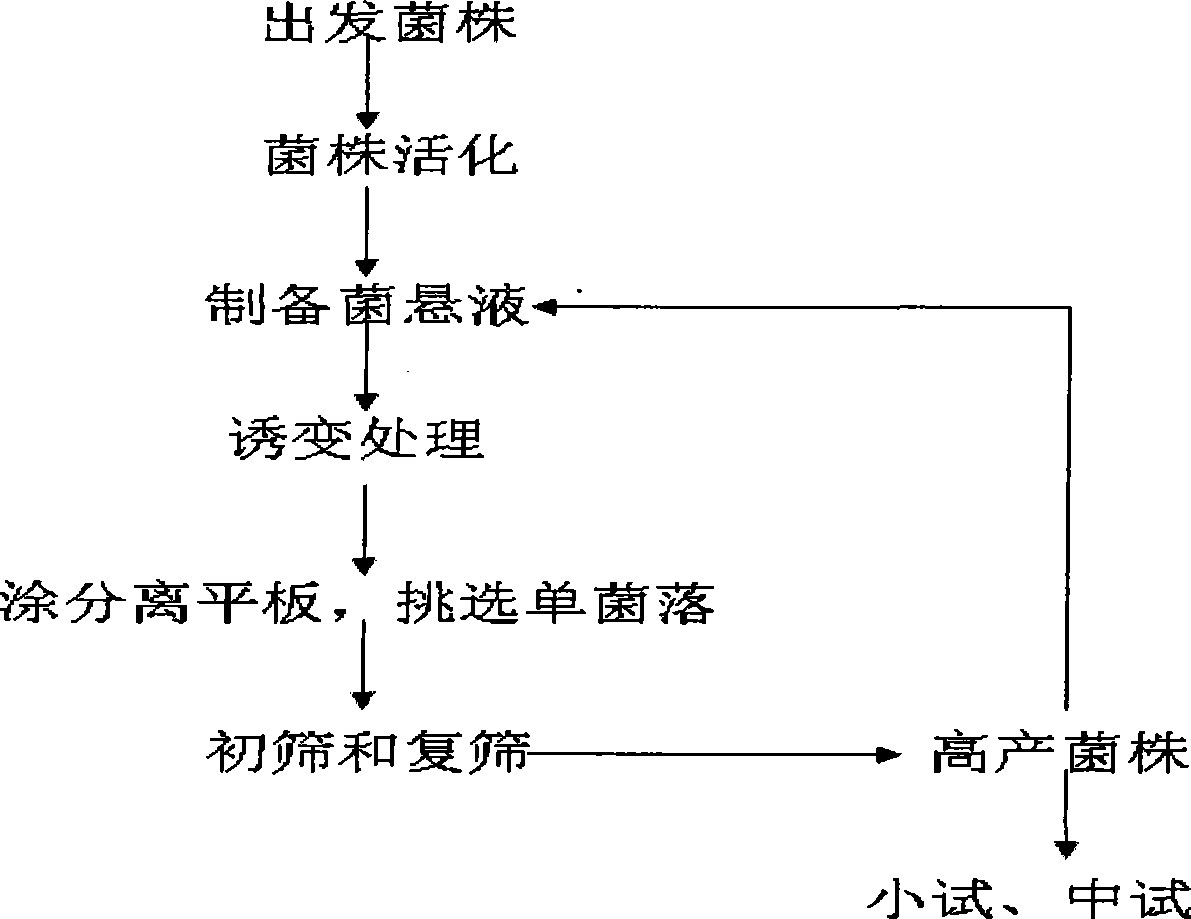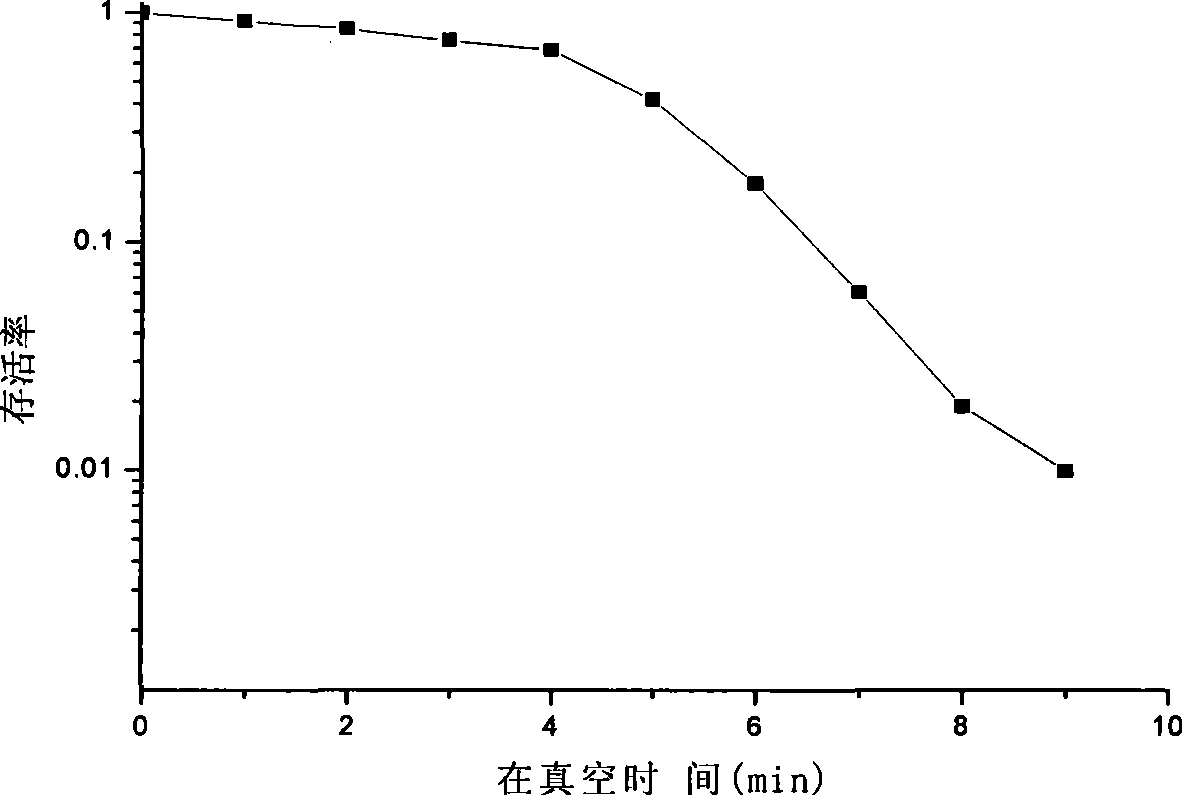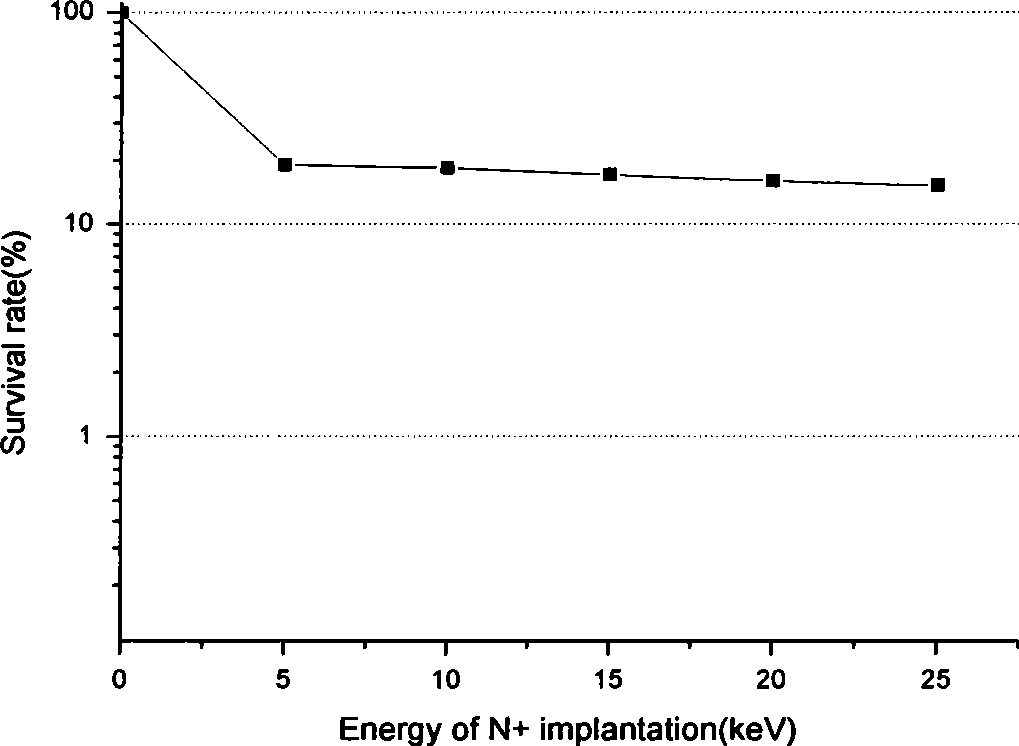White rot fungi, breeding method and use thereof
A technology of white rot fungi and strains, applied in fungi, microorganism-based methods, biochemical equipment and methods, etc., can solve the problems of slow development, low enzyme production level, and poor economic benefits.
- Summary
- Abstract
- Description
- Claims
- Application Information
AI Technical Summary
Problems solved by technology
Method used
Image
Examples
Embodiment Construction
[0035] The white rot fungus (Trametes Versicolor) YS-L613 strain of the present invention is obtained by mutagenesis and breeding by the following method, using white rot fungi as the starting strain, using UV, 60 A compound mutagenesis breeding technique combining CO, ultraviolet light, nitrosoguanidine, ion implantation and microwave treatment was used to breed a high-yielding laccase strain YS-L613.
[0036] The required materials and preparation methods are as follows:
[0037] 1.1 Starting strain
[0038] White rot fungus YS strain, screened and preliminarily identified laccase-producing strains in our laboratory, stored on CPDA slope at 4°C.
[0039] 1.2 Medium
[0040] 1.2.1 Incline medium (CPDA): 20g glucose, 1.5g MgSO4·7H2O, 3g KH2PO4, 2mg VB1, 15g agar powder, 1000mL 20% potato juice.
[0041] 1.2.2 Shake flask liquid fermentation medium: glucose 20g, asparagine 2.5g, MgSO4 7H2O 0.5g, FeSO4 7H2O 10mg, MnSO4 4H2O 1mg, ZnSO4 7H2O 1mg, CuSO4 5H2O 2mg, NaHPO4 H2O 100m...
PUM
 Login to View More
Login to View More Abstract
Description
Claims
Application Information
 Login to View More
Login to View More - R&D
- Intellectual Property
- Life Sciences
- Materials
- Tech Scout
- Unparalleled Data Quality
- Higher Quality Content
- 60% Fewer Hallucinations
Browse by: Latest US Patents, China's latest patents, Technical Efficacy Thesaurus, Application Domain, Technology Topic, Popular Technical Reports.
© 2025 PatSnap. All rights reserved.Legal|Privacy policy|Modern Slavery Act Transparency Statement|Sitemap|About US| Contact US: help@patsnap.com



